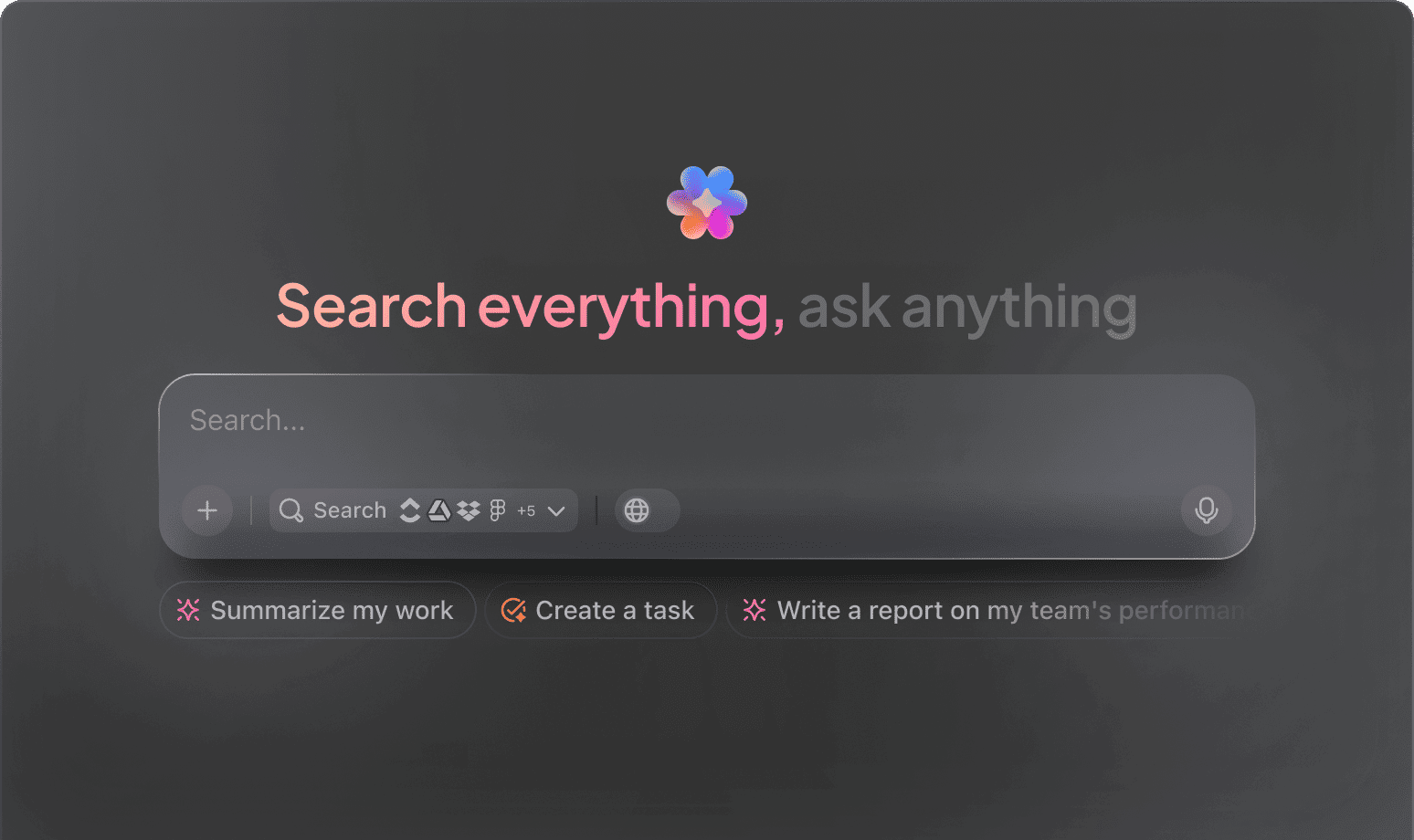AI Tools for Non-Fiction Writing
Top AI Prompts for Non-Fiction Authors
Craft compelling narratives, organize your research effortlessly, and elevate your writing process with ClickUp Brain.
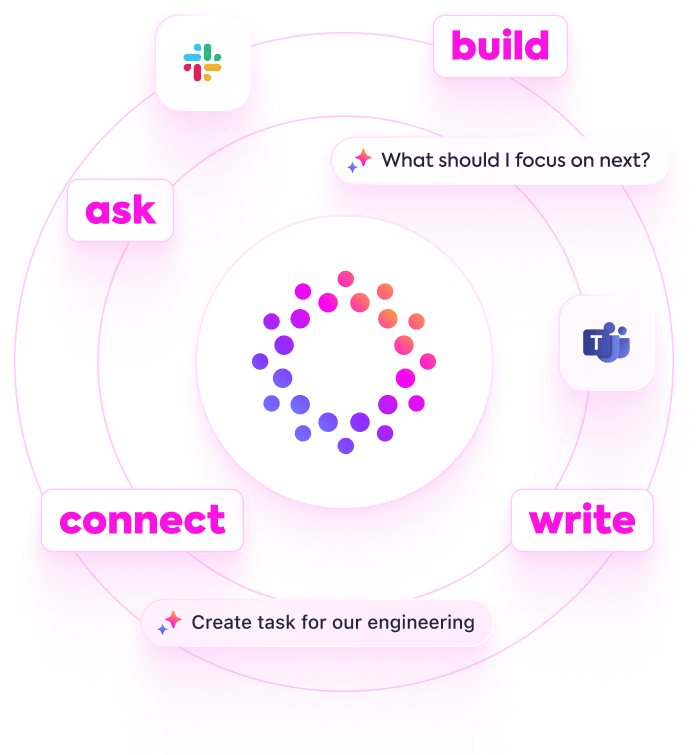
Trusted by the world’s leading businesses
AI for Non-Fiction Authors
Revolutionizing Non-Fiction Writing with AI Prompts in ClickUp Brain
Crafting compelling non-fiction goes beyond gathering facts—it’s about shaping ideas into clear, impactful narratives.
From research collection to structuring chapters, fact-checking, and final editing, non-fiction writing demands juggling numerous elements—and countless notes, drafts, and deadlines. AI prompts are now a vital part of this process.
Writers and teams leverage AI to:
- Quickly identify key themes and relevant sources
- Generate outlines, summaries, and draft sections with ease
- Clarify complex information and verify facts efficiently
- Transform scattered notes into organized plans, checklists, or writing tasks
Embedded within familiar tools—like documents, whiteboards, and project boards—AI becomes more than a helper. In solutions such as ClickUp Brain, it quietly converts creative ideas into structured, manageable steps.
ClickUp Brain Compared to Conventional Solutions
Why ClickUp Brain Stands Out
ClickUp Brain integrates seamlessly, understands your context, and empowers you to focus on writing instead of setup.
Conventional AI Writing Aids
- Constantly toggling between apps to collect information
- Repeating your objectives with every new prompt
- Receiving generic, irrelevant suggestions
- Hunting through multiple platforms to locate a single document
- Interacting with AI that only processes input without insight
- Manually switching between different AI engines
- Merely an add-on in your browser
ClickUp Brain
- Instantly accesses your projects, notes, and collaborative updates
- Retains your writing progress and thematic goals
- Provides detailed, context-aware guidance
- Offers comprehensive search across your entire workspace
- Supports hands-free input with Talk to Text
- Automatically selects the optimal AI model: GPT, Claude, Gemini
- Available as a dedicated Mac & Windows app designed for efficiency
Prompts for Non-Fiction Writing
15 Effective AI Prompts for Non-Fiction Writing (Tested in ClickUp Brain)
Enhance your research, drafting, and editing process with targeted AI assistance.

Outline 5 chapter themes for a book on sustainable living, based on the ‘Eco Practices 2025’ document.
Use Case: Accelerates content planning by leveraging existing research.
ClickUp Brain Behaviour: Analyzes document content to suggest coherent thematic directions for chapters.

What are the current trends in health and wellness writing for a general audience?
Use Case: Informs topic selection with up-to-date market insights.
ClickUp Brain Behaviour: Extracts key trends from internal reports and can incorporate public data for broader context.

Draft a concise introduction for a guide on digital marketing strategies, referencing notes from ‘Marketing Concepts’ and previous drafts.
Use Case: Aligns writing teams with a clear, consistent opening.
ClickUp Brain Behaviour: Pulls relevant excerpts and synthesizes them into a structured introduction.

Summarize comparative research findings on remote work productivity from the ‘Work Trends Q2’ report.
Use Case: Supports evidence-based writing without manual data review.
ClickUp Brain Behaviour: Extracts and condenses data and analysis from linked documents into a clear summary.

List top sources and references for climate change impacts, based on R&D notes and citation files.
Use Case: Facilitates accurate sourcing for fact-based writing.
ClickUp Brain Behavior: Scans documents to identify frequently cited materials and their relevance.

From the ‘Editing Checklist’ document, generate a task list for manuscript revision steps.
Use Case: Simplifies editing workflows with structured guidance.
ClickUp Brain Behavior: Transforms checklist items into actionable tasks within ClickUp.

Summarize 3 emerging narrative techniques in science writing from recent research and style guides.
Use Case: Keeps writers informed about effective storytelling methods.
ClickUp Brain Behavior: Identifies patterns and recommendations from linked style documents.

From the ‘Audience Survey Q1’ document, summarize key reader preferences for educational content.
Use Case: Helps tailor writing style and topics to audience needs.
ClickUp Brain Behavior: Analyzes survey data to highlight common feedback themes.

Write clear and engaging chapter summaries for a nonfiction book using the tone guidelines in ‘VoiceGuide.pdf.’
Use Case: Speeds up content creation while maintaining brand voice.
ClickUp Brain Behavior: References tone documents to suggest varied summary drafts.

Summarize recent changes in publishing standards for citations and formatting.
Use Case: Ensures manuscripts comply with updated editorial guidelines.
ClickUp Brain Behavior: Condenses linked policy documents into actionable updates.

Generate formatting guidelines for footnotes and endnotes based on publisher requirements stored in workspace.
Use Case: Guarantees consistency in manuscript references.
ClickUp Brain Behavior: Extracts rules and compiles them into a clear checklist.

Create a fact-checking checklist using the ‘Source Verification’ PDFs and research folders.
Use Case: Supports accuracy and credibility in writing.
ClickUp Brain Behavior: Identifies verification steps and organizes them into actionable items.

Compare approaches to explaining complex topics in nonfiction from competitor analysis documents.
Use Case: Informs style and clarity improvements.
ClickUp Brain Behavior: Summarizes comparative insights into a concise overview.

What are the latest trends in nonfiction book marketing since 2023?
Use Case: Guides promotional strategy with current market intelligence.
ClickUp Brain Behavior: Synthesizes trends from internal reports and external sources.

Summarize key reader feedback on chapter pacing and clarity from the ‘Beta Reader Notes’ folder.
Use Case: Drives targeted revisions based on audience insights.
ClickUp Brain Behavior: Extracts and prioritizes feedback themes across multiple documents.
Elevate Your Non-Fiction Writing with ClickUp Brain
Cut down revisions, unify your team’s efforts, and produce clearer content through AI-enhanced processes.





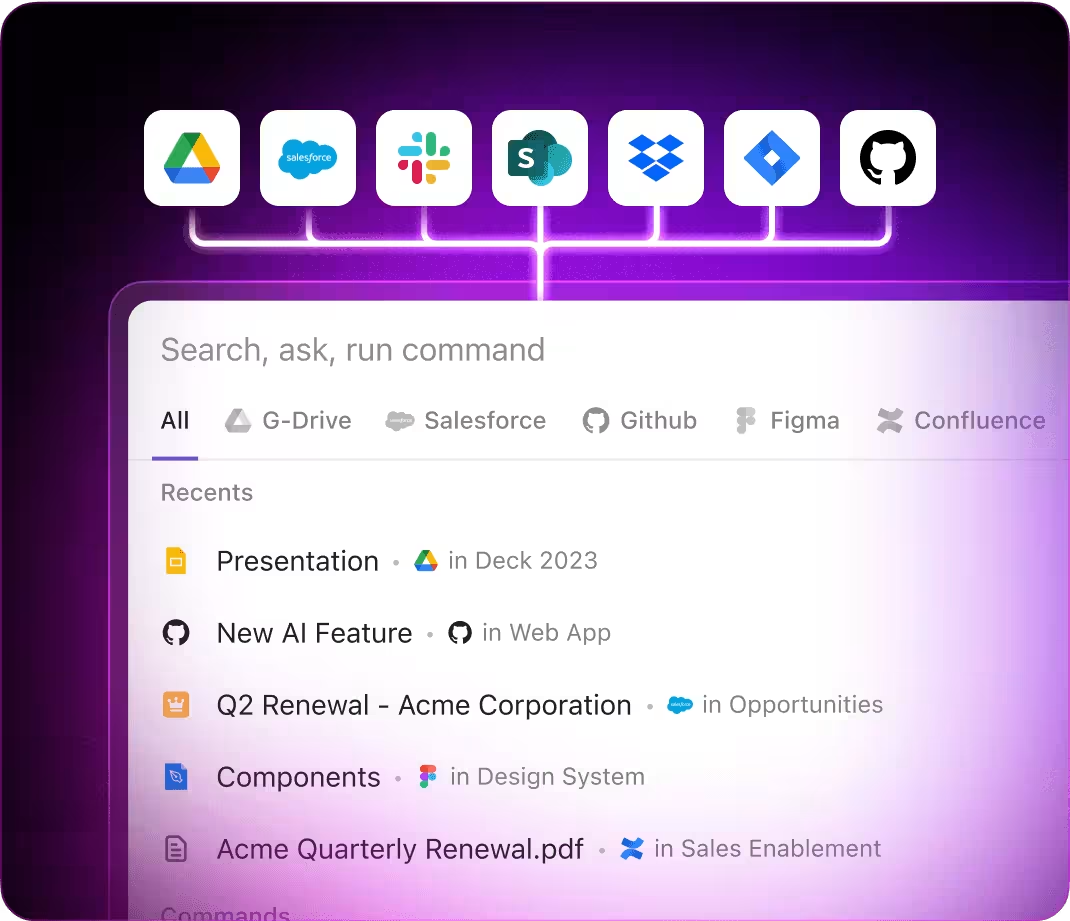
AI Applications
Leading 3 Applications of AI Prompts in Non-Fiction Writing Projects
Enhance research speed, boost clarity, and discover fresh perspectives with AI assistance in your writing process
From Ideas to Insightful Non-Fiction Drafts
Starting a non-fiction project usually means juggling scattered research and fragmented thoughts. ClickUp Brain organizes these into clear, collaborative outlines—right within ClickUp Docs.
Leverage ClickUp Brain to:
- Convert raw research notes into structured chapter frameworks
- Develop fresh content ideas informed by your previous writing (using context-sensitive AI assistance)
- With Brain Max, instantly explore your archive of articles, references, and editorial comments to inspire your next section.
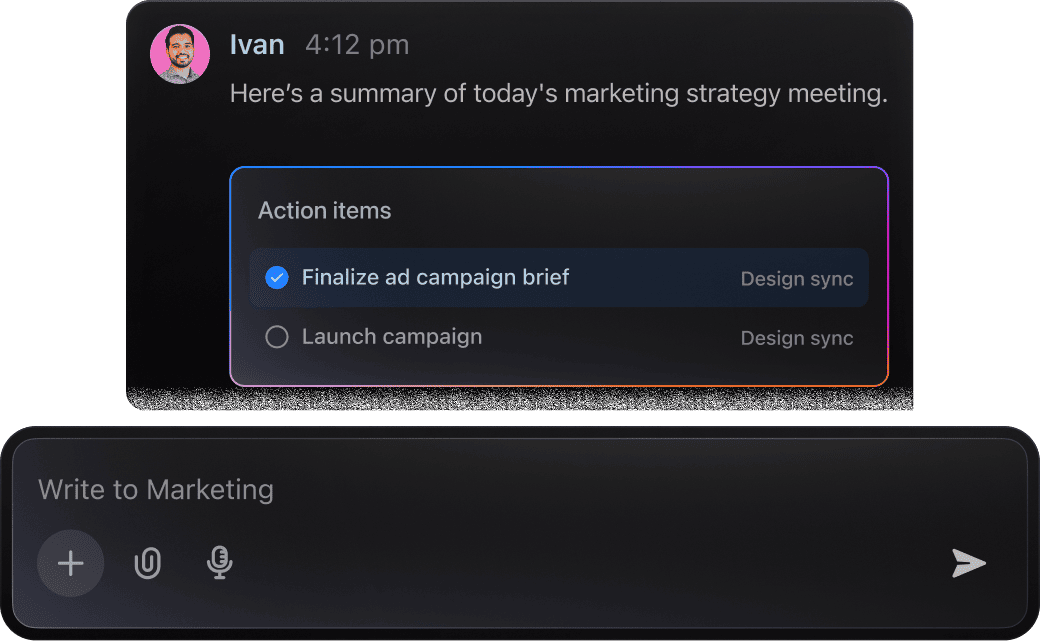
From Concept to Construction
Technical teams handle extensive documentation and detailed reviews. ClickUp Brain empowers you to pinpoint key tasks, identify risks early, and create clear next steps from complex project notes.
Leverage ClickUp Brain to:
- Condense in-depth engineering conversations captured in tasks or Docs
- Convert detailed design annotations into actionable engineering assignments
- Automatically generate problem logs or transition briefs
- With Brain Max, instantly retrieve past design choices, component analyses, or project dialogues throughout your workspace—eliminating tedious searches through technical records.
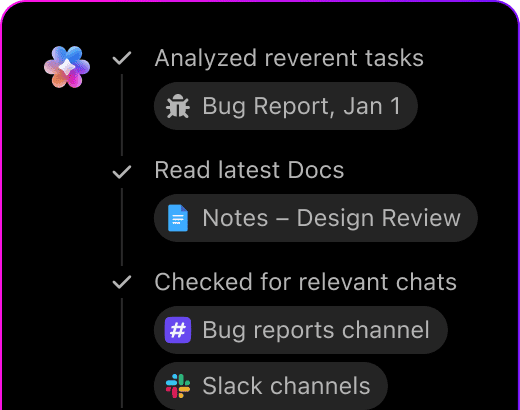
Non-Fiction Writing with ClickUp Brain
Crafting compelling non-fiction requires organizing research, refining drafts, and maintaining a consistent voice. ClickUp Brain simplifies this process by distilling key information and producing polished content aligned with your style.
Leverage ClickUp Brain to:
- Extract essential points from extensive notes and interviews
- Create clear, engaging text tailored to your audience
- Convert editorial feedback into precise revision tasks
- Brain Max enhances this by effortlessly referencing past articles or source materials, supporting continuity throughout your writing projects.
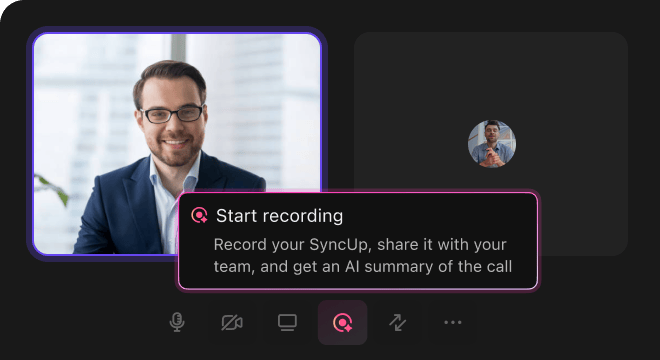
AI Advantages
How AI Prompts Revolutionize Non-Fiction Writing Processes
Integrating AI prompt workflows enhances every stage of your non-fiction writing journey:
- Kick off research swiftly: Transform initial concepts into detailed outlines, fact sheets, and chapter plans with ease
- Minimize revisions: Detect inconsistencies by reviewing earlier drafts and editorial notes
- Align your team: AI-crafted summaries and progress reports keep everyone informed and coordinated
- Make informed choices: Use prompts to gather relevant data and verify sources efficiently
- Craft compelling narratives: Generate fresh angles and insights that elevate your content beyond expectations.
Each output flows naturally within ClickUp, turning your AI-generated ideas into organized documents, actionable tasks, and insightful dashboards that drive your writing projects forward.
Prompt Guidance
Crafting Effective Prompts for Non-Fiction Writing
Clear prompts lead to compelling content.

Define the writing focus clearly
Vague prompts generate unfocused drafts. Specify details like subject area (e.g., “environmental science” or “historical biography”), target audience (e.g., “college students” or “industry professionals”), or writing style (e.g., “informative and concise” or “engaging narrative”).
Example: “Outline key points for a chapter on renewable energy aimed at high school readers.”

Use comparative prompts to deepen analysis
AI excels at drawing distinctions. Use prompts like “compare X and Y” to explore different perspectives, contrast theories, or evaluate sources.
Example: “Compare the impacts of solar and wind energy on local ecosystems.”

Frame prompts around writing objectives
Think of your prompt as a clear writing goal. Instead of “Write about climate change,” focus on the intended outcome:
Example: “Draft an introduction explaining the causes of climate change for a general audience.”

Specify the desired output format
Need a bullet list, summary, or detailed explanation? Make it explicit. AI delivers better when the format is clear.
Example: “Provide a bullet-point list of five benefits of electric vehicles with brief explanations.”
Enhance Non-Fiction Writing with ClickUp Brain
ClickUp Brain goes beyond organizing tasks—it's your trusted partner throughout the entire non-fiction writing process.





